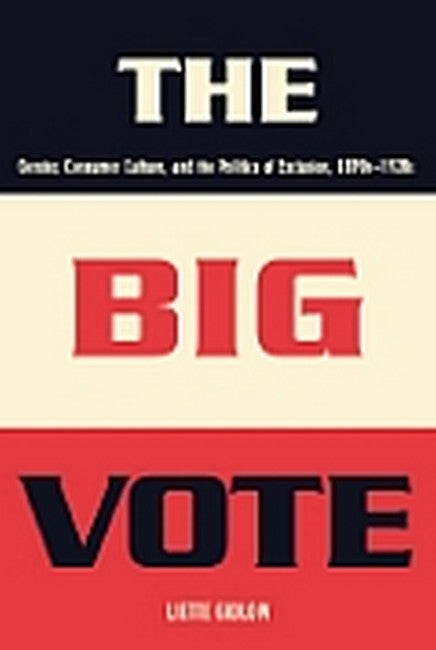''A compelling account of the Get-Out-the-Vote campaigns of the 1920s, reminding us that concerns about turnout in American elections are not new. The Big Vote also suggests that the motivations and meaning of calls for greater participation may be far more complex than they appear to be on the surface.''Alexander Keyssar, Matthew W. Stirling, Jr. Professor of History and Social Policy, John F. Kennedy School of Government, Harvard University, and author of The Right to Vote: The Contested History of Democracy in the United States '' The Big Vote will take its place as one of the more influential books in political history and political culture published in the last decade . . . Unlike many historians, Gidlow has been able to meld historical approaches using empirical studies of voting behavior with those using language to understand politics. This is quite a methodological triumph.''Jean Baker, author of Affairs of Party: The Political Culture of Northern Democrats in Mid-Nineteenth Century America ''Solidly researched and elegantly written, this book is an important contribution to the literature on the fascinating political decade of the 1920s. Liette Gidlow illuminates not only the strategic and structural facets of the 'Get Out the Vote' campaigns of the 1920s but also the ways in which women and men, black and white, and in various regions of the country, pursued places for themselves in the public sphere. Highly readable, this book provides important insights for all scholars interested in the creation of the political past and how that past influences our political culture today.''Melanie Gustafson, University of Vermont''Not only illuminates an aspect of the 1920s that has not received sufficient attention but, in doing so, it also propounds a provocative thesis that historians will need to address.''Nicholas Burckel, History ''Gidlow's topic is a timely one. Her account of the largely forgotten GOTV campaigns of the 1920s may carry lessons for the present era.''Nikki Mandell, American Historical Review ''Gidlow's . . . observations are helpful for serious students of marketing and political science.'' Minneapolis Star Tribune Low voter turnout is a serious problem in American politics today, but it is not a new one. Its roots lay in the 1920s when, for the first time in nearly a century, a majority of eligible Americans did not bother to cast ballots in a presidential election. Stunned by this civic failure so soon after a world war to ''make the world safe for democracy,'' reforming women and business men launched massive campaigns to ''Get Out the Vote.'' By 1928, they had enlisted the enthusiastic support of more than a thousand groups in Forty-six states. In The Big Vote , historian Liette Gidlow shows that the Get-Out-the-Vote campaignsoverlooked by historians until nowwere in fact part of an important transformation of political culture in the early twentieth century. Weakened political parties, ascendant consumer culture, labor unrest, Jim Crow, widespread anti-immigration sentiment, and the new woman suffrage all raised serious questions about the meanings of good citizenship. Gidlow recasts our understandings of the significance of the woman suffrage amendment and shows that it was important not only because it enfranchised women but because it also ushered in a new era of near-universal suffrage. Faced with the apparent equality of citizens before the ballot box, middle-class and elite whites in the Get-Out-the-Vote campaigns and elsewhere advanced a searing critique of the ways that workers, ethnics, and sometimes women behaved as citizens. Through techniques ranging from civic education to modern advertising, they worked in the realm of culture to undo the equality that constitutional amendments had seemed to achieve. Through their efforts, by the late 1920s, ''civic'' had become practically synonymous with ''middle class'' and ''white.'' Richly documented with primary sources from political parties and civic groups, popular and ethnic periodicals, and electoral returns, The Big Vote looks closely at the national Get-Out-the-Vote campaigns and at the internal dynamics of campaigns in the case-study cities of New York, New York, Grand Rapids, Michigan, and Birmingham, Alabama. In the end, the Get-Out-the Vote campaigns shed light not only on the problem of voter turnout in the 1920s, but on some of the problems that hamper the practice of full democracy even today.

